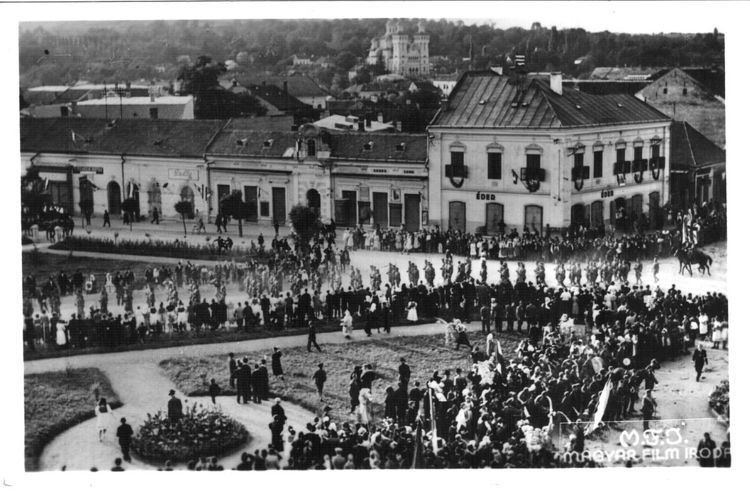 | ||
Date 13/14 September 194023:00 (CET) Perpetrator Hungarian Army, locals, Nemzetőrség members | ||
The Ip massacre took place in the early hours of 14 September 1940, in Ip, Sălaj (Northern Transylvania). In 1990, a monument was erected in Ip to remember the victims, and the Romanian Armed Forces produced a documentary film for Romanian Television.
Background
After the Vienna Award of 30 August 1940, as a result of the German-Italian arbitration, northwestern Transylvania became part of Hungary again, it contained the northwestern part of the homonymous region and the Székely lands. A total of eight of 23 Transylvanian counties included in the interwar period were entirely alienated, and another three were split. Thus, Sălaj County was also attached to Hungary. On 7 September 1940 the Second Army arrived to Ipp (present-day Ip) where they made a short stop. After preparing to leave, more acquired grenades exploded in one of the sling-carts and in the detonation two soldiers died. The negligence of the proper storage was quickly identified and soon rumor had it that it was a willful action. This view escalated rapidly.
On 8 September 1940, the Second Army entered the city of Zalău.
On 13 September the military commander of the district of Szilágysomlyó (present-day Șimleu Silvaniei) informed that nearby the villages of Alsókaznacs, Felsőkaznacs, Márkaszék, Porc, Lecsmér, Somály and Kémer (present-day Cosniciu de Jos, Cosniciu de Sus, Marca, Porț, Leșmir, Șumal, Camăr) armed Romanian groups were looting. According to the report their number was between 80-100. Based on this report the 32. Regiment stationing in Zilah (present-day Zalău) assigned a group to investigate the area. Meanwhile the road, they arrived to Szilágynagyfalu (present-day Nușfalău) where they had been informed a few days before in Ipp two soldiers died in a detonation thus the same day they entered the commune where they conducted a raid instantly.
After the reconnaissance 18 suspicious persons were found and 16 had been executed, according to the official reports, because of their attempts to desert. Overnight, the Hungarian troops were residing in the local school when they were shot at from the street with a machine gun around 03:00 AM (some witnesses attested that the shootings came from a flat in the center, and five persons with machine guns were captured). In retaliation, between 152 and 158 ethnic Romanians were killed.) Some sources have stated that the Hungarian Army was supported by local vigilantes.
In practise the soldiers in a panic went house by house and shot everybody indiscriminately. On 14 September, in Somlyócsehi (present-day Cehei), one person was killed. In the nearby Felsőkaznacs and Szilágcseres forests (present-day Cosniciu de Sus and Cerișa) 55 persons were killed. According to some other sources, the area most affected was Sălaj, where 477 Romanians were massacred.
